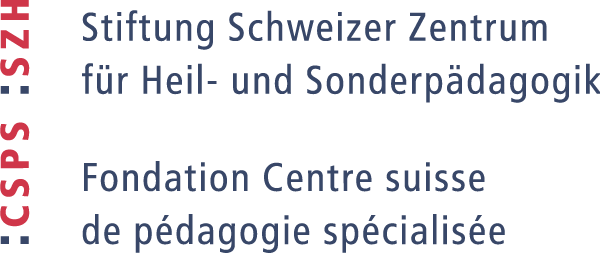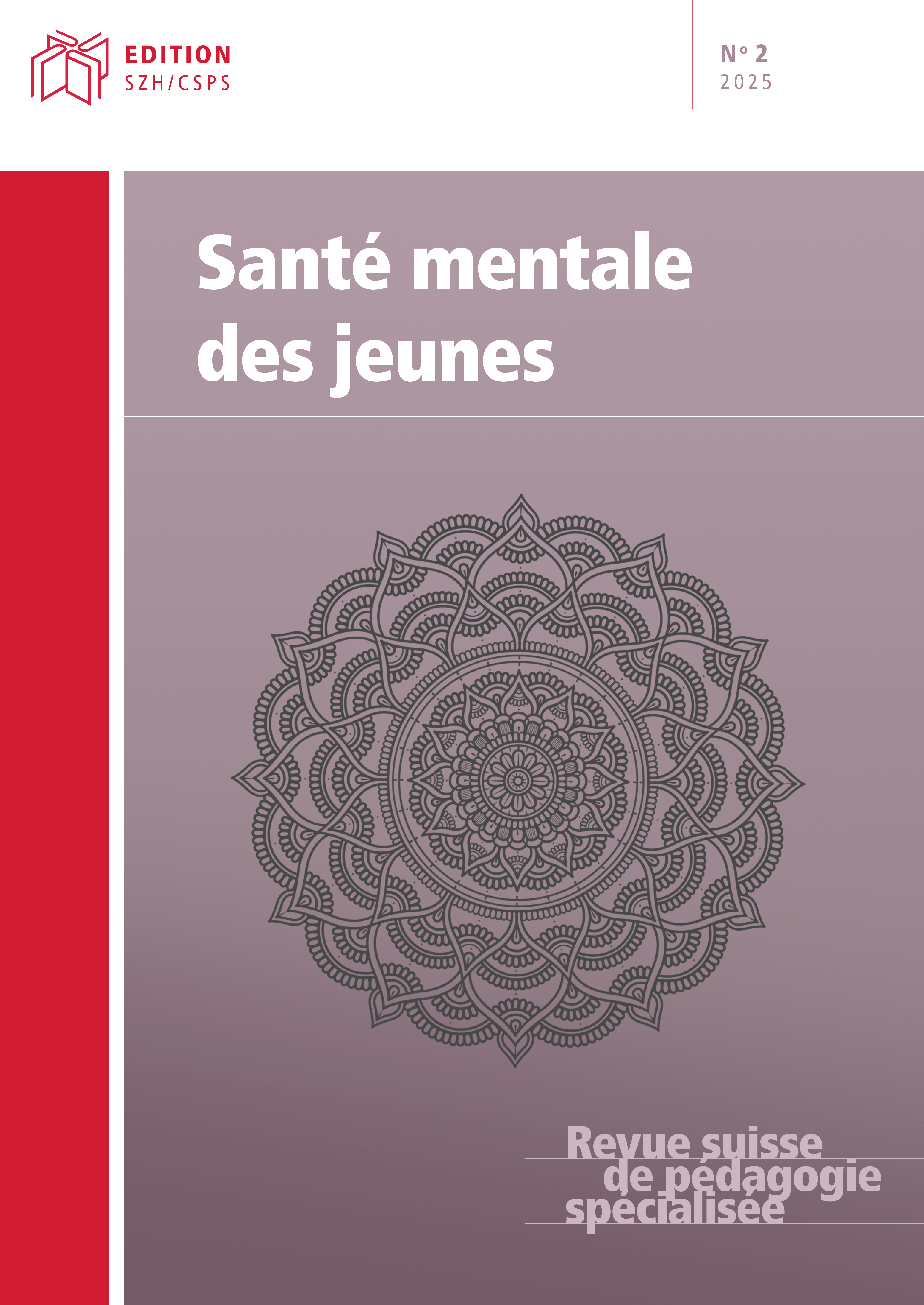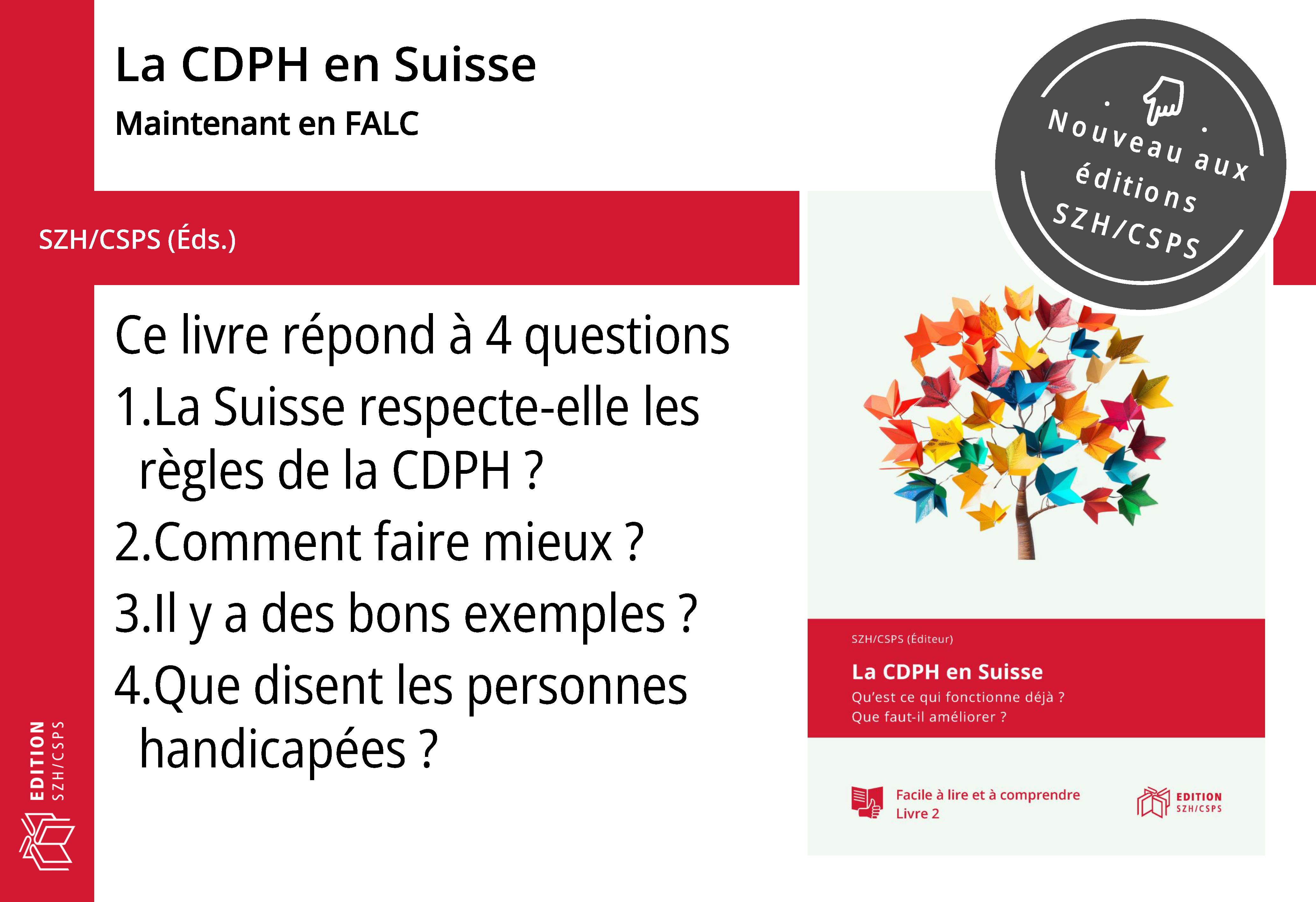Quels sont les facteurs de risque et de protection du burnout scolaire ?
Similitudes et différences des résultats entre les élèves ayant ou non des mesures de soutien
DOI :
https://doi.org/10.57161/r2025-02-04Mots-clés :
burnout, santé mentale, élève, facteur de risque, facteur de protectionRésumé
En Suisse, peu d’études ont mesuré la prévalence du burnout plusieurs années de suite dans une même population, alors qu’il touche environ 10 à 15 % des jeunes selon les études internationales. Cet article présente une recherche dont l’objectif est de documenter la santé des élèves de 11 à 13 ans dans le contexte scolaire au travers de plusieurs temps de mesure. L’article s’intéresse également aux facteurs de risque et de protection du burnout scolaire. Les résultats montrent que les élèves au bénéfice de mesures d’aide ont des moyennes de burnout plus élevées que leurs pairs, au même titre que les élèves qui ont de faibles résultats scolaires ou ceux qui ressentent négativement le climat de classe.
Références
Bask, M., & Salmela-Aro, K. (2013). Burned out to drop out: Exploring the relationship between school burn-out and school dropout. European Journal of Psychology of Education, 28(2), 511‑528. https://doi.org/10.1007/s10212-012-0126-5
Cheung, P., & Li, C. (2019). Physical Activity and Mental Toughness as Antecedents of Academic Burnout among School Students: A Latent Profile Approach. International Journal of Environmental Research and Public Health, 16(11), 2024. https://doi.org/10.3390/ijerph16112024
Demerouti, E., Bakker, A. B., Nachreiner, F., & Schaufeli, W. B. (2001). The job demands-resources model of burnout. Journal of Applied Psychology, 86(3), 499-512. https://doi.org/10.1037/0021-9010.86.3.499
De Chambrier, A. F., & Dierendonck, C. (2022). Vers l’implémentation du modèle de Réponse à l’Intervention dans les systèmes éducatifs d’Europe francophone ? L’Année psychologique, 122(2), 301-337. https://doi.org/10.3917/anpsy1.222.0301
Di Grassi, A. (2022). Costruire un contesto inclusivo e un efficace co-teaching tra docente curricolare e docen-te per l’attività di sostegno attraverso la progettazione universale. Media Education, 13(1), 25–39. https://doi.org/10.36253/me-12569
Ebersold, S. (2017). L’école inclusive, face à l’impératif d’accessibilité. Éducation et Sociétés, 40(2), 89-103. https://doi.org/10.3917/es.040.0089
Engels, M. C., Pakarinen, E., Lerkkanen, M. K., & Verschueren, K. (2019). Students' academic and emotional adjustment during the transition from primary to secondary school: A cross-lagged study. Journal of School Psychology, 76, 140-158. https://doi.org/10.1016/j.jsp.2019.07.012
Fiorilli, C., De Stasio, S., Di Chiacchio, C., Pepe, A., & Salmela-Aro, K. (2017). School burnout, depressive symp-toms and engagement: Their combined effect on student achievement. International Journal of Educa-tional Research, 84, 1-12. https://doi.org/10.1016/j.ijer.2017.04.001
Fischer, S., Nater, U. M., & Laferton, J. A. (2016). Negative stress beliefs predict somatic symptoms in students under academic stress. International journal of behavioral medicine, 23, 746-751. https://doi.org/10.1007/s12529-016-9562-y
Friend, M., & Cook, L. (2020) Interactions: Collaboration skills for school professionals (9e éd.). Pearson.
Fuchs, D., & Fuchs, L. S. (2011). Introduction to response to intervention: What, why and how valid is it? Read-ing Research Quarterly, 41(1), 93-99. https://doi.org/10.1598/RRQ.41.1.4
Hornby, G. (2014). Inclusive special education. Evidence-Based practices for children with Special Needs and Disabil-ities. New York: Springer.
Lacombe, N., Juvet, M., Straccia, C., & Squillaci, M. (sous presse). Trajectory of school burnout during the tran-sition from primary to secondary school. The influence of students' orientation in three distinct sec-tions according to their academic results. Acta Psychologica.
Lacombe, N., Hey, M., Hofmann, V., Pagnotta, C., & Squillaci, M. (2023). School burnout after COVID-19, prevalence and role of different risk and protective factors in preteen students. Children, 10(5), 823. https://doi.org/10.3390/children10050823
Lebert-Charron, A., Boujut, E., Beaudoin, M., & Quintard, B. (2021). Du stress au burnout scolaire : Définitions, déterminants psychosociaux, évaluation et pistes de prévention. Pratiques psychologiques, 27(1), 57-69. https://doi.org/10.1016/j.prps.2019.02.002
Liu, X., Zhang, L., Wu, G., Yang, R., & Liang, Y. (2021). The longitudinal relationship between sleep problems and school burnout in adolescents: A cross-lagged panel analysis. Journal of Adolescence, 88(1), 14-24. https://doi.org/10.1016/j.adolescence.2021.02.001
Loi fribourgeoise sur la pédagogie spécialisée (LPS) du 11.10.2017 (version entrée en vigueur le 01.09.2022) https://bdlf.fr.ch/app/fr/texts_of_law/411.5.1
Maslach, C., & Jackson, S. E. (1981). The Measurement of Experienced Burnout. Journal of Organizational Behav-ior, 2, 99‑113. https://doi.org/10.1002/job.4030020205
Meylan, N., Doudin, P.-A., Antonietti, J.-P., & Stéphan, P. (2015). French validation of the school burnout inven-tory. European Review of Applied Psychology, 65(6), 285-293. https://doi.org/10.1016/j.erap.2015.10.002
Parviainen, M., Aunola, K., Torppa, M., Lerkkanen, M.-K., Poikkeus, A.-M., & Vasalampi, K. (2021). Early ante-cedents of school burnout in upper secondary education: A five-year longitudinal study. Journal of Youth and Adolescence, 50(2), 231-245. https://doi.org/10.1007/s10964-020-01331-w
Pijl , S. J., & Frostad , P. (2010) . Peer acceptance and self-concept of students with disabilities in regular edu-cation. European Journal of Special Needs Education, 25(1), 93–105. https://psycnet.apa.org/doi/10.1080/08856250903450947
Pijl, S. J., Frostad, P., & Flem, A. (2008). The social position of pupils with special needs in regular schools. Scandinavian Journal of Educational Research, 52(4), 387-405. https://doi.org/10.1080/00313830802184558
Plancherel, B., Bettschart, W., Bolognini, M., Dumont, M., & Halfon, O. (1997). Influence comparée des évè-nements existentiels et des tracas quotidiens sur la santé psychique à la préadolescence. Neuropsychia-trie de l’Enfance et de l’Adolescence, 45(3), 126-138.
Salmela-Aro, K., Kiuru, N., Pietikainen, M., & Jokela, J. (2008). Does school matter? The role of school context in adolescents’ school-related burnout. European Psychologist, 13(1), 12–23. https://psycnet.apa.org/doi/10.1027/1016-9040.13.1.12
Salmela-Aro, K., Kiuru, N., Leskinen, E., & Nurmi, J. E. (2009). School Burnout Inventory (SBI): Reliability and Validity. European Journal of Psychological Assessment, 25(1), 48-57. https://doi.org/10.1027/1015-5759.25.1.48
Salmela-Aro, K., Upadyaya, K., Hakkarainen, K., Lonka, K., & Alho, K. (2017). The Dark Side of Internet Use: Two Longitudinal Studies of Excessive Internet Use, Depressive Symptoms, School Burnout and En-gagement Among Finnish Early and Late Adolescents. Journal of youth and adolescence, 46(2), 343-357. https://doi.org/10.1007/s10964-016-0494-2
Vansoeterstede, A., Cappe, E., Lichtle, J., & Boujut, E. (2023). A systematic review of longitudinal changes in school burnout among adolescents: Trajectories, predictors, and outcomes. Journal of Adolescence, 95(2), 224-247. http://dx.doi.org/10.1002/jad.12121
Virtanen, T. E., Vasalampi, K., Kiuru, N., Lerkkanen, M.-K., & Poikkeus, A.-M. (2020). The role of perceived so-cial support as a contributor to the successful transition from primary to lower secondary school. Scan-dinavian Journal of Educational Research, 64(7), 967-983. https://doi.org/10.1080/00313831.2019.1639816
Walburg, V., Zakari, S., & Chabrol, H. (2014). Rôle du burnout scolaire dans les idées de suicide des adoles-cents. Neuropsychiatrie de l’Enfance et de l’Adolescence, 62(1), 28-32. https://doi.org/10.1016/j.neurenf.2013.08.002
Warnock, M., & Norwich, B. (2010). Special educational needs: A new look (2e éd.). Bloomsbury Publishing
Publiée
Comment citer
Numéro
Rubrique
Licence
© Noémie Lacombe, Myriam Squillaci 2025

Ce travail est disponible sous la licence Creative Commons Attribution 4.0 International .



